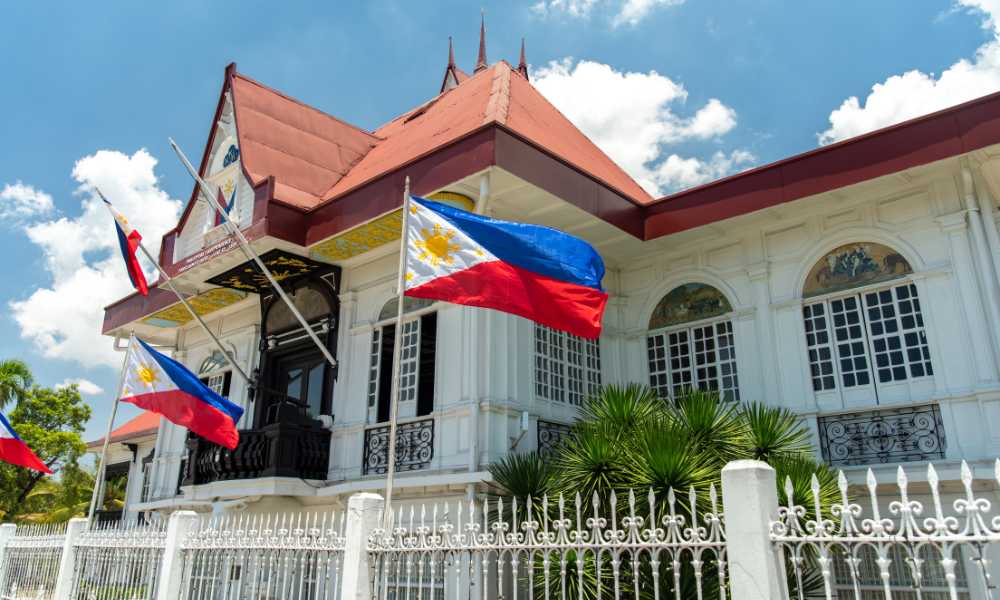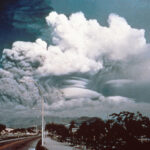June 12, 1898 is one of the most significant dates in Philippine history. On this day, General Emilio Aguinaldo formally proclaimed the independence of the Philippines from Spain after over 300 years of colonial rule.
The declaration took place in Aguinaldo’s ancestral home in Kawit, Cavite, with the Philippine flag being raised and the national anthem being played for the first time.
While the Kawit declaration did not receive immediate international recognition, it was a pivotal moment that asserted Filipino nationhood and sovereignty.
It came amidst a complex geopolitical situation, with the Philippine Revolution against Spain, the Spanish-American War, and the emerging American colonial era in the Philippines. The story behind the June 12, 1898 declaration provides insights into the Filipino struggle for self-determination.

Background: The Philippine Revolution
The roots of the June 12 declaration can be traced to the Philippine Revolution against Spanish colonial rule, which began in August 1896. Secret revolutionary societies like the Katipunan, founded by Andres Bonifacio, initiated an armed struggle for independence.
Emilio Aguinaldo, then the mayor of Kawit, Cavite, emerged as a leader of the revolution in Cavite.
After initial successes, Aguinaldo and other leaders accepted exile to Hong Kong in December 1897 with the Pact of Biak-na-Bato, which involved the Spanish paying the revolutionaries in exchange for a truce. However, they purchased weapons in Hong Kong to continue the fight.
The Spanish-American War and Aguinaldo’s Return
The situation changed dramatically with the outbreak of the Spanish-American War in April 1898. The United States, which had been monitoring the Cuban and Philippine revolutions against Spain, declared war after the USS Maine incident in Havana.
On May 1, 1898, the U.S. Asiatic Squadron under Commodore George Dewey decisively defeated the Spanish fleet in the Battle of Manila Bay. Aguinaldo, who had been communicating with U.S. officials, saw an opportunity to advance Philippine independence.
With Dewey’s help, Aguinaldo returned to the Philippines aboard the USS McCulloch on May 19. American forces provided his troops with weapons seized from the Spanish. Aguinaldo rallied his revolutionary forces and began liberating towns in Cavite.
The Declaration of Independence on June 12
On June 12, 1898, a month after his return, Aguinaldo gathered revolutionary leaders and local representatives in his home in Kawit. There, between 4 and 5 p.m., he formally proclaimed the independence of the Philippines from Spain.
The event, attended by a huge crowd, involved the first public display of the Philippine flag sewn in Hong Kong by Marcela Agoncillo and her daughters. The Marcha Nacional Filipina, composed by Julian Felipe as the national anthem, was played by the San Francisco de Malabon band.
Ambrosio Rianzares Bautista prepared the Spanish text of the Act of the Declaration of Independence and read it at the gathering. The declaration was signed by 98 Filipinos appointed by Aguinaldo, as well as one American artillery officer, Colonel L.M. Johnson, who attended as a witness.
The declaration included a list of grievances against Spanish rule stretching back to Magellan’s arrival in 1521. It conferred on Aguinaldo the powers to lead the revolutionary government, including granting pardons and amnesty. The wording echoed parts of the U.S. Declaration of Independence.
Diplomatic Complexities and the Malolos Congress
Aguinaldo had hoped that the U.S. would recognize Philippine independence, similar to its stance towards Cuba.
However, American officials took no action that would suggest recognition of the declaration. The true intentions of the U.S. towards the Philippines remained unclear at this stage.
The declaration took place amidst a complex diplomatic situation, with other colonial powers like Germany, Britain, France and Japan having warships in Manila Bay to monitor the situation. Germany in particular showed interest in acquiring the Philippines if the U.S. did not.
On August 1, the June 12 proclamation was ratified by 190 municipal presidents from 16 provinces in Bacoor, Cavite. In September 1898, the Malolos Congress modified the declaration upon the urging of Apolinario Mabini, removing language that essentially placed the Philippines under American protection.
The Treaty of Paris and the Philippine-American War
The Spanish-American War ended with the Treaty of Paris signed on December 10, 1898. In the treaty, Spain ceded the Philippines to the United States for $20 million, along with Guam and Puerto Rico.
The treaty was not recognized by Aguinaldo’s government, which had not been represented in the negotiations. On January 23, 1899, the First Philippine Republic was formally established with the promulgation of the Malolos Constitution and Aguinaldo as president.
Tensions rose as it became clear that the U.S. would not recognize Philippine independence. On February 4, 1899, the Philippine-American War broke out and lasted until 1902. The U.S. prevailed against the Filipinos, and established the Insular Government to administer the islands as an American colony.
The Long Road to Internationally-Recognized Independence
The dream of June 12 remained unfulfilled for decades under U.S. colonial rule. The U.S. set up political institutions and prepared the Philippines for eventual self-rule, but full independence was slow in coming.
The Tydings-McDuffie Act of 1934 provided for the independence of the Philippines by 1946, after a 10-year transition period. World War II and the Japanese occupation from 1942-1945 intervened during this period.Finally, on July 4, 1946, the United States granted independence to the Philippines.
The date was chosen by the U.S. to coincide with its own Independence Day. For many years, Filipinos celebrated July 4 as their Independence Day.
June 12 as the National Day of Independence
A strong tradition of celebrating June 12 as the true Independence Day persisted among Filipino historians and nationalists. In 1962, President Diosdado Macapagal issued Presidential Proclamation No. 28 which declared June 12 as Flag Day, emphasizing its importance.
On August 4, 1964, upon the advice of historians and the urging of nationalists, Macapagal signed Republic Act No. 4166 into law, designating June 12 as the country’s Independence Day. The law also renamed July 4 as Philippine Republic Day.
Since 1964, June 12 has been celebrated annually as the National Day of the Philippines, with ceremonies and programs across the country.
The day is a regular holiday, and government offices and schools are closed. The main commemoration usually takes place at Aguinaldo’s house in Kawit, which is now a national shrine.
Conclusion
The story of the June 12, 1898 Declaration of Independence in Kawit is central to the narrative of the Filipino people’s struggle for freedom and nationhood. While it did not immediately result in internationally recognized independence, it was a bold assertion of sovereignty against colonial rule.
The path from Kawit to true independence was long and arduous, with the Philippines experiencing American colonial rule and occupation by Japan before achieving full self-determination in 1946. The choice of June 12 as Independence Day in 1964 represents a recognition of the primacy of the Filipino revolutionary struggle.
Today, the declaration in Kawit is remembered as a defining moment in Philippine history, one that continues to inspire national pride and a striving for self-determination.
The complex events surrounding the declaration also provide a window into the geopolitical realities of the time, and the challenges faced by an emerging nation in asserting its place in the world.




Your comment is awaiting moderation.
Looking forward to reading more. Great blog.Much thanks again. Fantastic.